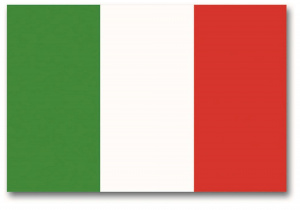Difference between revisions of "Language/Italian/Grammar/Italian-Alphabet/en"
m (Quick edit) |
m (Quick edit) |
||
| Line 1: | Line 1: | ||
<span pgnav> | |||
{| class="wikitable pg_template_nav" | |||
|} | |||
</span> | |||
{{Italian-Page-Top}} | {{Italian-Page-Top}} | ||
| Line 86: | Line 91: | ||
{{Italian-Page-Bottom}} | {{Italian-Page-Bottom}} | ||
<span pgnav> | |||
{| class="wikitable pg_template_nav" | |||
|} | |||
</span> | |||
Revision as of 11:39, 29 April 2023
Italian is a beautiful and complex language with a rich culture and history attached to it. In this lesson, we will learn about the Italian alphabet and pronunciation. Learning the Italian alphabet is the first step in learning the language. This lesson is part of the larger course titled "Complete 0 to A1 Italian Course" that aims to take complete beginners to the A1 level.
Overview
The Italian alphabet consists of 21 letters, excluding J, K, W, X, and Y. The Italian language uses both vowels and consonants. Each letter is assigned a specific pronunciation in Italian. In this lesson, we will go over each letter of the Italian alphabet, its pronunciation, and some useful cultural information attached to it.
The Italian Alphabet
Here is a table with each letter of the Italian alphabet, its pronunciation, and the corresponding English translation:
| Italian | Pronunciation | English |
|---|---|---|
| A (a) | /a/ or /aː/ | Apple |
| B (b) | /bi/ | Ball |
| C (c) | /tʃi/ as in "church" or /k/ as in "kite" | Cat |
| D (d) | /di/ | Dog |
| E (e) | /e/ or /ɛ/ | Elephant |
| F (f) | /ɛf/ | Fish |
| G (g) | /dʒi/ as in "giant" or /ɡ/ as in "goose" | Gorilla |
| H (h) | /akka/ | Hotel |
| I (i) | /i/ or /iː/ | Ice cream |
| L (l) | /ɛl/ | Lion |
| M (m) | /ɛmme/ | Monkey |
| N (n) | /ɛnne/ | Nurse |
| O (o) | /o/ or /ɔ/ | Orange |
| P (p) | /pi/ | Pineapple |
| Q (q) | /ku/ | Queen |
| R (r) | /ɛrre/ | Rainbow |
| S (s) | /ɛsse/ | Snake |
| T (t) | /ti/ | Tiger |
| U (u) | /u/ or /uː/ | Umbrella |
| V (v) | /vi/ | Violin |
| Z (z) | /zɛta/ | Zebra |
As you learn the Italian alphabet, it is essential to practice the correct pronunciation of each letter. However, please note that the Italian language has articulation differences that translate into vocalization changes. In other words, the pronunciation of the same letter changes depending on the context.
Also, keep in mind that many Italian words are borrowed from other languages, such as Latin, Greek, and French. Therefore, when you come across a word that has a different spelling, it might have a different pronunciation. Understanding the rules and the exceptions to them is fundamental for learning Italian pronunciation.
Conclusion
Congratulations on completing the lesson on the Italian alphabet and pronunciation. You now have the tools necessary to navigate the Italian language. Keep practicing the pronunciation of each letter, and remember, practice makes perfect!
